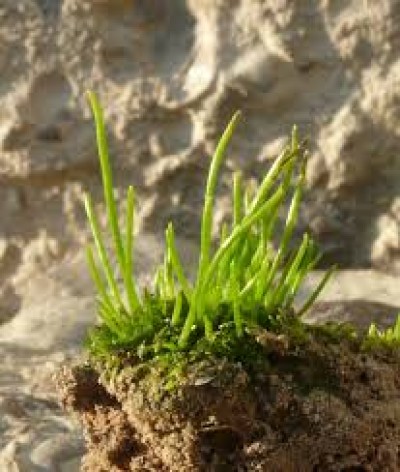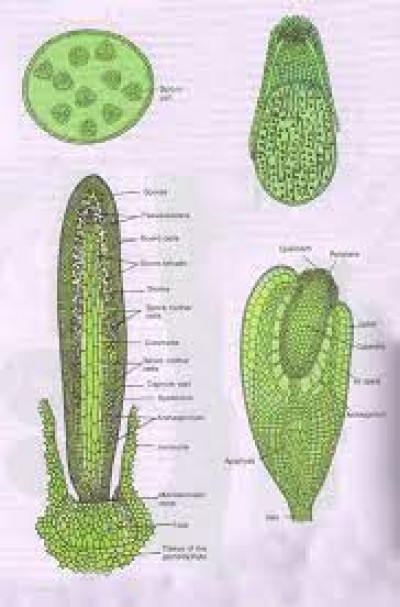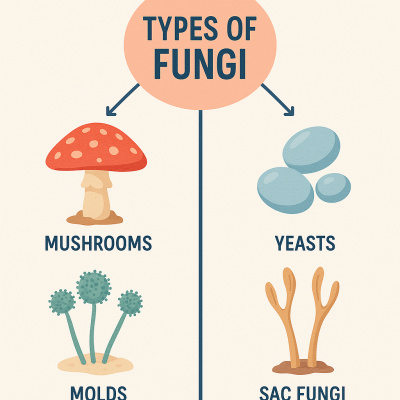Top courses
Free

Intermediate
Effective Communication Skills
(5)
(42 Reviews)

07:12:58 Hours
40 Lectures
Last updated Wed, 16-Apr-2025
40 Lessons
07:12:58 Hours
English
The Effective Communication Skills course enhances participants' ability to communicate, confidently, and persuasively in various professional and personal contexts, through a combination of theoretical insights, practical exercises, and real-world applications.
- Demonstrate proficiency in various communication styles.
- Actively listen and respond empathetically in conversations.
- Deliver effective and persuasive presentations.
- Manage and resolve conflicts using constructive communication.
- Effectively convey ideas in written communication.
Free

Intermediate
SCH6201 PHARMACEUTICAL AND MEDICINAL CHEMISTRY
(5)
(58 Reviews)

10:35:40 Hours
51 Lectures
Last updated Fri, 26-Jan-2024
51 Lessons
10:35:40 Hours
English
Affordable, discipline specific and employment-oriented course with the credibility of a 66-year-old department and a NAAC accredited & ISO certified autonomous institution. The present SMOOC is an 8-week completely open, online, modular course intended for undergraduate learners.
- Recognise the importance of medicinal chemistry in daily life, identify the use of chemical compounds in drug designing and explain drug target interactions of enzymes and receptors .
- Classify and name drugs on scientific lines and apply principles of drug administration.
- Sketch the step wise mechanism for the synthesis of sulphanilamide, Penicillin G, Erythromycin, Chloroquine, Paracetamol, Salbutamol, diazepam and frusemide
- Identify the causes and effects for HIV, identify the most suitable confirmatory test- ELISA and discuss the structures of Nelfinavir and Indivanir.
- Use the analytical and synthetic skills for successful careers in production section of pharmaceutical industries.
Free

Intermediate
SCH2201 General & Inorganic Chemistry
(0)
(0 Reviews)

14:00:54 Hours
32 Lectures
Last updated Thu, 06-Mar-2025
32 Lessons
14:00:54 Hours
English
A compulsory 3 credit course for BSc Chemistry Major & Chemistry Minor students in the II Semester - APSCHE 2023 revised syllabus
- At the end of the course the learner should be able to- 1. Visualise the structure of atom 2. Classify elements based on physical and chemical properties. 3. Comprehend the properties of ionic compounds. 4. Identify the structure of inorganic compounds. 5. Explain the existence of special types of compounds based on weak binding forces. 6. identify acids and bases and predict the nature of salts.
Free

Beginner
DIFFERENTIAL EQUATIONS
(0)
(0 Reviews)

08:20:21 Hours
36 Lectures
Last updated Thu, 06-Mar-2025
36 Lessons
08:20:21 Hours
English
This 8-week free online course on Differential Equations is designed for B.Sc. Mathematics major students. It covers fundamental concepts, solution techniques, and applications through video lectures, PPTs, course materials, and weekly quizzes. Complete the course and pass the final quiz in Week 8 to earn a Certificate of Completion.
- Apply Techniques for Solving First-Order Differential Equations
- Analyze Clairaut’s Equation and Orthogonal Trajectories
- Evaluate Solutions of Homogeneous and Non-Homogeneous Linear Equations
- Apply Particular Integrals in Non-Homogeneous Equations
- Analyze Cauchy-Euler Equation and Method of Variation of Parameters
Free

Intermediate
Political Institutions
(0)
(0 Reviews)

03:48:21 Hours
14 Lectures
Last updated Tue, 22-Apr-2025
14 Lessons
03:48:21 Hours
English
Political institutions are structured systems and organizations within a government that are responsible for creating, implementing, and enforcing laws and policies. They play a crucial role in the governance process and can include various entities such as:
Legislatures: Bodies responsible for making laws, such as parliaments or congresses.
Executives: Individuals or offices responsible for implementing laws and managing the government, including presidents, prime ministers, and their cabinets.
Judiciaries: Courts and judges responsible for interpreting laws and ensuring justice.
Bureaucracies: Administrative agencies and departments that execute government policies and manage public services.
Political Parties: Organizations that represent different political ideologies and compete in elections to influence government policy.
These institutions function together to ensure the effective operation of a government, maintain order, and address the needs and interests of the public.
Free

Beginner
Web Interface Development
(0)
(0 Reviews)

00:20:00 Hours
17 Lectures
Last updated Mon, 02-Jun-2025
17 Lessons
00:20:00 Hours
English
- 1. Describe the concepts of World Wide Web, and the requirements of effective web design.
- 2. Develop web pages using the HTML and CSS features with different layouts as per need of applications.
- 3. Use the JavaScript to develop the dynamic web pages.
Free

Advanced
UNIT-III-General characters of Fungi and Ainsworth classification
(0)
(0 Reviews)

00:00:00 Hours
0 Lectures
Last updated Thu, 24-Apr-2025
0 Lessons
00:00:00 Hours
English
- On completion of this course students will be able to:. Distinguish the characteristics of different groups of fungi. Understand the mode of thallus nutrition and reproduction.
Free

Advanced
Classification of bryophytes
(0)
(0 Reviews)

00:00:00 Hours
0 Lectures
Last updated Thu, 24-Apr-2025
0 Lessons
00:00:00 Hours
English
The term Bryophyta was first introduced by Braun (1864), however, he included algae, fungi, lichens and mosses in this group. Later, algae, fungi and lichens were placed in a separate division Thallophyta and liverworts, mosses in division Bryophyta. The rank of division Bryophyta to this well-defined group of plants was first given by Schimper (1879).International code of
Botanical Nomenclature (ICBN) suggested in 1956-that the suffix-opsida should be used for the classes and such usage had already been proposed by Rothmaler (1951) for the classes of Bryophytes.
- understand the classification of bryophytes
Free

Advanced
General characters of Bryophytes
(0)
(0 Reviews)

00:00:00 Hours
0 Lectures
Last updated Thu, 24-Apr-2025
0 Lessons
00:00:00 Hours
English
Bryophyta (Gr. Bryon = moss; phyton = plant), a division of kingdom Plantae comprises of
Liverworts, Hornworts and mosses. They are groups of green plants which occupy a position
between the thallophytes (Algae) and the vascular cryptogams (Pteridophytes). Bryophytes
produce embryos but lack seeds and vascular tissues. They are the most simple and primitive
group of Embryophyta. They are said to be the first land plants or non-vascular land plants
(Atracheata). Presence of swimming antherozoids is an evidence of their aquatic ancestory.
Bryophytes are land plants that differ from all other plants lacking lignified vascular
tissue by having the gametophyte generation dominant and having unbranched sporophytes
that produce a single sporangium
- Bryophytes,morphology,anatomy,reproduction,Alternation of generation
Free

Beginner
Type study-Marchantia
(0)
(0 Reviews)

00:00:00 Hours
0 Lectures
Last updated Fri, 25-Apr-2025
0 Lessons
00:00:00 Hours
English
It is one of the most common liverworts found in moist, shady, cool areas with abundant moisture. It grows in large mats. Damp soil, streams, springs, wet rocks are the favorable places for its growth. There are about 65 species of Marchantia and are found all over the world. The most common species of Himalayan region are M. palmata, M. polymorpha and M. nepalensis
- On completion of this topic students will be able to Distinguish and identify the marchantiaene Understand the mode reproduction.
- able to understand the morphology anatomy and reproduction of algae
Free

Advanced
Anthoceros
(0)
(0 Reviews)

00:00:00 Hours
0 Lectures
Last updated Fri, 25-Apr-2025
0 Lessons
00:00:00 Hours
English
Anthoceros is represented by about 200 species. All species are terrestrial and cosmopolitan in distribution. The species grow in very moist and shady places like slopes, rocks or sides of the ditches. Some species are found growing on decaying wood (Cavers, 1911). Unlike other bryophytes Anthoceros is usually not well adapted to resist dry conditions.
In India Anthoceros is represented by about 25 species. Out of these three species of Anthoceros viz., A. himalayensis, A. erectus and A. chambensis are commonly found growing in the Western Himalayan region at an altitude of 5000-8000 feet (Kashyap, 1915). These species are also found growing in Mussoorie, Kulu, Manali, Kumaon, Chamba valley, Punjab, Madras and in plains of South India.
Mehra and Handoo (1953) reported A. himalayensis
- Upon completing studies on Anthoceros (hornworts), students should understand its classification, morphology, anatomy, and reproduction, including the alternation of generations between haploid and diploid phases. They should also be able to identify the unique features of hornworts, such as the symbiotic relationship with Nostoc and the presence of pyrenoids in chloroplasts. Additionally, students should grasp the significance of Anthoceros as a model organism for studying the evolution of land plants.
Free

Advanced
Funaria
(0)
(0 Reviews)

00:00:00 Hours
0 Lectures
Last updated Fri, 25-Apr-2025
0 Lessons
00:00:00 Hours
English
The genus is cosmopolitan in its distribution. It includes 117 species. F.hygrometrica is the most common moss which is found all over the world. The mosses grow luxuriantly in
humus soil and on the soil burnt by fire. They grow well on damp rocks and wall. The green protonema grows on the newly ploughed fields while some are epiphytic and grows well on tree trunks.
- Upon completing studies on Funaria, students should understand its classification as a bryophyte, know its life cycle including alternation of generations, and be familiar with its structure and reproduction, including both vegetative and sexual methods. They should also be able to identify Funaria in the field and appreciate its ecological role
Free

Advanced
Evolution of Sporophyte
(0)
(0 Reviews)

00:00:00 Hours
0 Lectures
Last updated Fri, 25-Apr-2025
0 Lessons
00:00:00 Hours
English
The evolution of sporophyte in Bryophytes have been explained with the help of two theories: one is the Antithetic Theory or Theory of Sterilization and the other one is the Homologous Theory or Reduction Theory. The antithetic theory states that the evolution of sporophytes has taken place from simple (Riccia, Marchantia) to complex (Funaria, Sphagnum) sporophytes through progressive sterilization of potentially sporogenous tissue. The other theory (Homologous theory) however assumes that the evolution of sporophyte has taken place from more complex sporophytes (Funaria, Sphagnum) to simpler ones (Riccia, Marchantia) by retrogressive sterilization of sporogenous tissues (exactly opposite is that of antithetic theory).
Free

Beginner
Economic importance of fungi
(0)
(0 Reviews)

00:00:00 Hours
0 Lectures
Last updated Fri, 25-Apr-2025
0 Lessons
00:00:00 Hours
English
Fungi include hundreds of species which are of tremendous economic importance to man. In fact our lives are intimately linked with those of fungi. Hardly a day passes when we are not benefited or harmed directly or indirectly by these organisms.
They play an important role in medicine yielding antibiotics, in agriculture by maintaining the fertility of the soil and causing crop and fruit diseases, forming basis of many industries and as important means of food. Some of the fungi are important research tools in the study of fundamental biological processes.
- After studying the economic importance of fungi, degree students will gain a comprehensive understanding of how these organisms impact various industries, including medicine, agriculture, food, and industry. They will also learn about the dual nature of fungi, acknowledging both their beneficial and detrimental roles in human society. This knowledge can be applied in diverse career paths, from research and development to biotechnology and sustainable agriculture.
Free

Beginner
II Semester-Mechanics and Properties of Matter
(0)
(0 Reviews)

03:28:44 Hours
6 Lectures
Last updated Thu, 08-May-2025
6 Lessons
03:28:44 Hours
English
Mechanics studies the motion of objects under the influence of forces, while the properties of matter describe the characteristics that distinguish one material from another. Mechanics focuses on how forces cause movement, displacement, and deformation, while properties of matter encompass both physical characteristics.



Write a public review